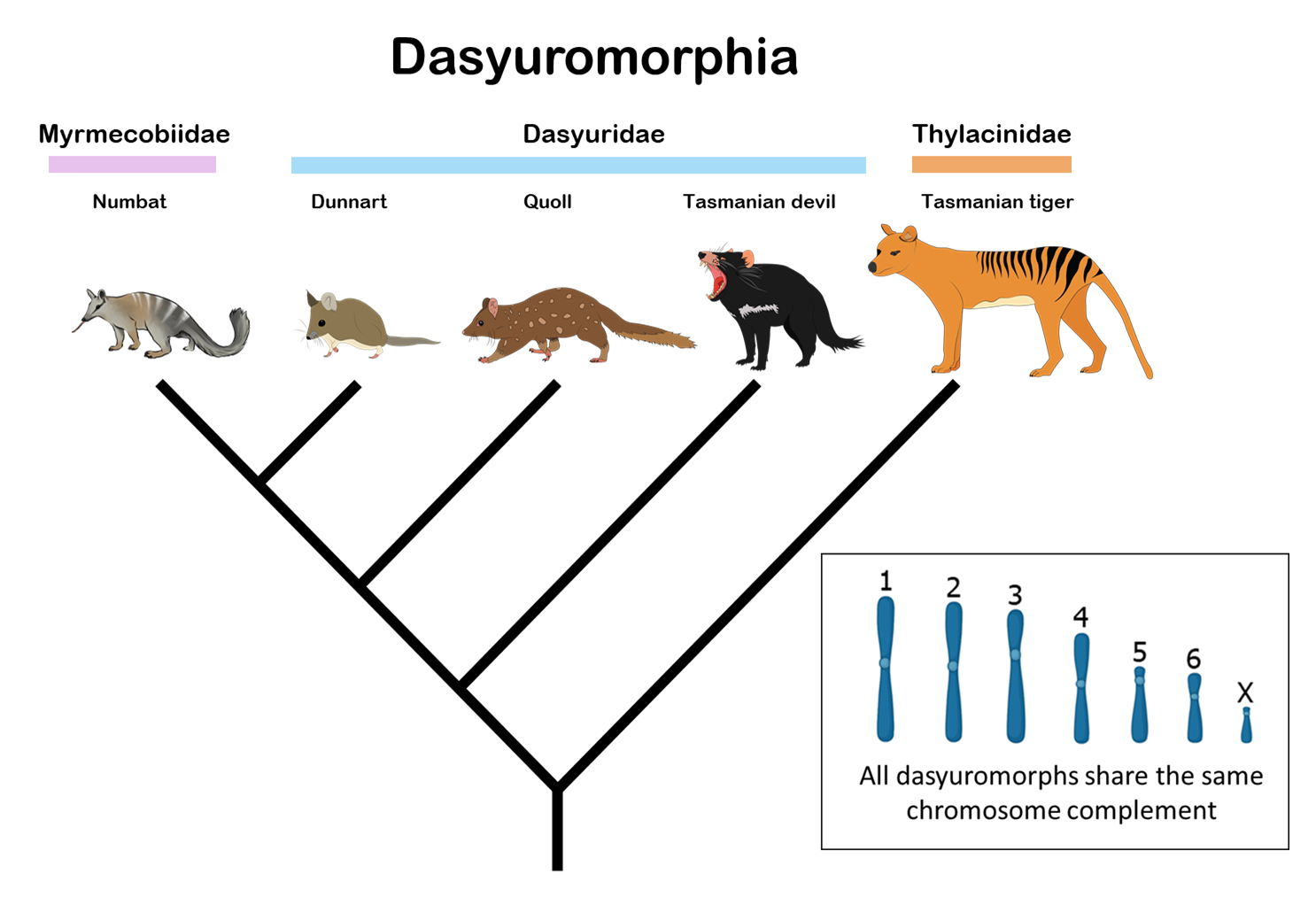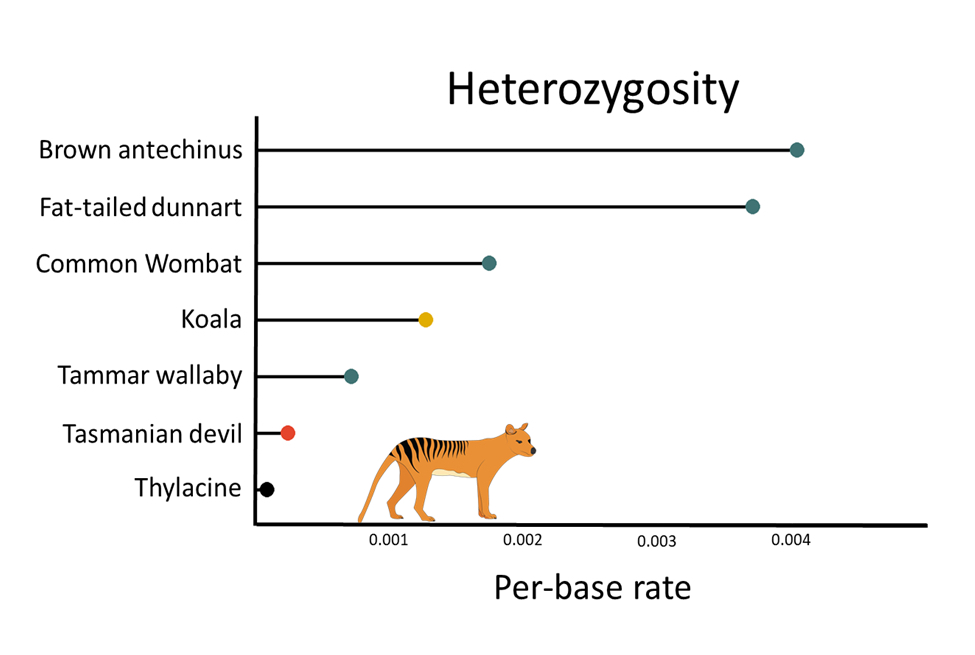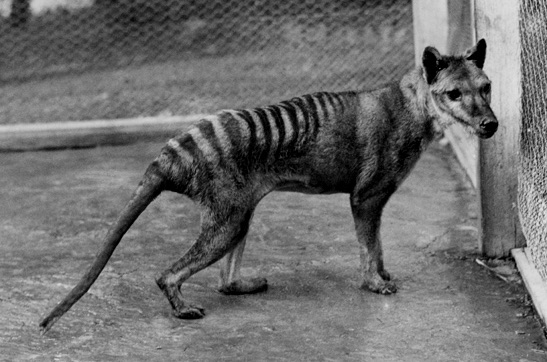
Sciences & Technology
The 9 steps to de-extincting Australia’s thylacine

New research is using genomes from living thylacine relatives to build a new, chromosome-scale genome for the de-extinction of the Tasmanian tiger
Published 31 March 2022
The DNA of extinct species is providing a window into their biology, evolution, and natural history. However, after an animal’s death, its DNA invariably breaks into tiny pieces, making it difficult to computationally reconstruct.
Now, the newly established TIGRR Lab – a research centre focused on marsupial conservation and restoration – has used a clever approach to produce the most complete genome for the thylacine – also known as the Tasmanian tiger – to date.

This represents a significance advance in our long-term goal of resurrecting the thylacine through a process called de-extinction.
Australia has one of the highest mammalian extinction rates in the world and the Tasmanian tiger is an emblem of this ongoing crisis.
The thylacine was once the largest marsupial predator in Australia but was hunted to extinction in the early 20th century by settlers, incentivised by a £1 bounty. Best known for its tiger stripes and dog-like head, the thylacine was captured in haunting photographs and news reels prior to its extinction.

Sciences & Technology
The 9 steps to de-extincting Australia’s thylacine
In 2018 our team, led by Professor Andrew Pask, published the first genome sequence of the thylacine.
To accomplish this, we extracted DNA from a pouch young specimen at Melbourne Museum that had been stored in alcohol for more than 100 years. We then used DNA sequencers to read nearly all three billion nucleotide “letters” of its genetic information and computationally reassembled them.
This genomic resource enabled us and our collaborators to confirm the thylacine’s evolutionary relationships with living marsupials, probe the genetic basis of its physical similarities with canids (dogs and their relatives) and to show that the thylacine had already undergone a long-term decline in numbers over many thousands of years.

While the draft assembly of the thylacine genome contained the overwhelming majority of its genetic information, we were unable to piece everything back together.
In a living animal, DNA is organised into several chromosomes, each of which is one long DNA molecule comprised of millions of letters. But due to the breakdown of thylacine DNA over the last century, we were only able to reassemble stretches of several thousands of letters long at a time.
Now, advances in DNA assembly techniques and the explosion of high-quality reference genomes from living species related to the thylacine have allowed us to build a new, chromosome-scale genome for the thylacine.

Sciences & Technology
The shared evolution of the Tasmanian tiger and the wolf
In our study, published in the peer-reviewed journal Genome Biology and Evolution, we combined two distinct approaches.
The first, called de novo assembly, uses complex algorithms to find overlapping stretches of DNA produced by a sequencing machine.
The second, called reference-guiding, uses the high-quality genome sequence of a living relative as a template to help us stitch together small fragments into full-length chromosomes.
In our case, we were able to line up thylacine DNA sequences against the chromosomes of the closely-related Tasmanian devil with incredible efficiency and accuracy. This was possible because of a unique quirk of their biology.

The thylacine and devil both belong to the order of marsupial carnivores – Dasyuromorphia – a group which is notable for having some of the best-preserved chromosomes among mammals. Consequently, our new thylacine genome assembly is nearly the same quality as that of recently sequenced marsupial species like the fat-tailed dunnart, tammar wallaby and ground cuscus.
A high-quality genome is essential for thylacine de-extinction. This is because no live thylacine cell lines exist, so we cannot simply clone a thylacine – like Dolly the sheep.
Instead, we will have to use genome editing with techniques like CRISPR-Cas9 to reconstruct the thylacine genome in marsupial stem cells. Our new genome assembly will help the TIGRR Lab team to map out around 90 percent of these genome edits, and further improvements will get us the rest of the way there.

Our new genome assembly is also allowing us to dig deeper into the thylacine’s genetic diversity prior to its extinction. For instance, we have now shown that the thylacine had the lowest diversity of any marsupial species we examined.
This finding confirms an earlier study of ours which used mitochondrial DNA, but at a genome-wide scale providing greater power and accuracy. Moreover, this is consistent with our 2018 demographic analysis, which showed that the thylacine had undergone a long-term decline in numbers, likely representing a genetic bottleneck.
Low genetic diversity can have important impacts on a species’ fitness.
Inbreeding can cause damaging recessive disorders to manifest in a population. Moreover, low diversity can leave species susceptible to disease and unable to adapt to a changing environment.

However, while low diversity and genetic health are intimately related, they aren’t synonymous. Some species that have undergone profound bottlenecks have been brought back from the brink.
The Arabian oryx (Oryx leucoryx) went extinct in the wild in the 1970s and for a time was only preserved in captivity, with a population of just nine individuals. From this tiny cohort, the species has grown to more than 6,000 individuals, including around 1,000 in the wild.

Sciences & Technology
Using genetics to conserve wildlife
Today, the Arabian oryx is no longer considered an endangered species.
Moving forward, we aim to continue improving our chromosome-scale thylacine genome and use this resource to better understand the relationship between the thylacine’s low diversity and its genetic health. This can be done by sequencing DNA from the many hundreds of preserved thylacines in museums around the world.
Studies like this are essential for TIGRR Lab’s long-term goal of resurrecting Australia’s vital apex predator through genome engineering while also ensuring the health and viability of their future populations.
Banner: TMAG Tasmanian Museum and Art Gallery